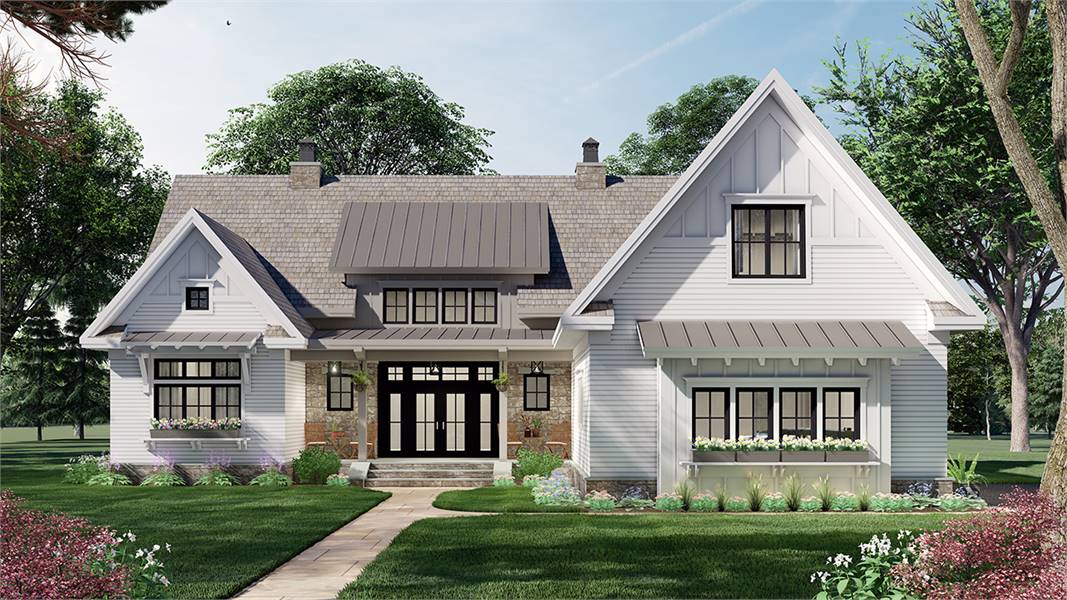
From video doorbells to solar roof panels, modern-day thoughts for the house that seemed like a delusion have made their manner into the mainstream nowadays. But in a clever twist on the future that in no way was, the folks at Angie’s List took seven of the beyond’s most eccentric future-domestic thoughts and taken them to exist in a new collection of photorealistic architectural renderings that are a time capsule of futuristic housing guarantees that stay unfilled.
“The duration between 1958 and 1963 can without difficulty be described as the Golden Age of American Futurism,” consistent with Angie’s List. With NASA being based in 1958 and “The Jetsons” lively sitcom airing from 1962 to 1963, the home services internet site says, “Those few years have been packed with some of our wildest ideas of a techno-utopian future. Some of this period’s wildest thoughts had been approximately how homes of the future would appear.”
To create the task, Angie’s List studies team got down to discover principles for homes of the future created between 1900 and 1970. They recreated ideas from exceptional decades that protected various building substances, creation techniques, and architectural styles.

Research in hand, the artists at the group have been stimulated to create the practical pc-generated wonders proven right here that are a far cry from how homes of these eras clearly turned out. But as Angie’s List notes, “Sometimes astute, every so often idealistic, those visions for the future from beyond generations are an untapped source of inspiration for house owners who want to take risks and create spaces which might be particular.”
Here are the seven homes with descriptions via Angie’s List. Ready to step internal?
1. Rolling Houses (the Nineteen Thirties): The September 1934 issue of Everyday Science and Mechanics magazine confident readers that spherical houses would quickly end up especially stylish, even though the appeal of dwelling in a large hamster ball isn’t right now apparent. The innovation turned into meant to make the faraway creation and transport of new houses extra truthful, as touring within the ball might be a terrible idea if you valued your crockery and ornaments. Features for layout reference: Shell is prefabricated at some other place, areas for home windows are cut out; the big band is wrapped around the ball to maintain it off the ground; rolled to its place, being pulled via a tractor; furnishings introduced afterward.
2. Space House (the 1950s): Just four years before the Dome House, the cover of the December 1953 Science Fiction Adventures mag proposed a glass dome, however in outer space. Puerto Rican cowl artist Alex Schomburg’s loose-floating snow globes come whole with rooftop chutes for launching space hatchbacks out into the superb unknown. Curiously, Schomburg had been the artist and business enterprise associate of a window show studio inside the 1920s. His residence design contains a double layer of glass: the dome protective the assets from the gap surroundings and tinted wall-to-wall windows at the exterior of the house. Features for design reference: Ports for spacecraft, surrounded through protecting dome, Astro-Turf lawn, communications transmitters, plenty of open areas.
3. Glass House (the 1920s): Utilizing a special new type of glass designed to admit the ultraviolet “fitness rays” of the solar, the Vitaglass house would offer a year-spherical summertime thanks to the addition of mercury arc lamps for gloomy days. Like all of the exceptional new architectural improvements, Vitaglass was first examined inside the monkey house of a town zoo. But even simple glass was arguable during the interwar years, with concerns that its new reputation could discourage humans from ever going out of doors. Features for design reference: Glass that admitted ultraviolet rays that “tanned the skin, improve the blood and brace up the machine to resist sickness.” Produced artificial mild while essential for a permanent summer season effect. Windows assured all the time. Movable partitions. Convertible steel fixtures. Garage for a vehicle/flying device.
4. Moving House (the 1900s): Jean-Marc Côté’s “House Rolling Through The Countryside” featured in a group of cigarette cards drawn up around the turn of the 19th century, imagining what existence might appear to be in the year 2000. Equal elements “Mad Max: Fury Road” and “Wacky Races,” this utopian imaginative and prescient posits a totally social mobile domestic model of architectural inclinations that we simply see nowadays. Its rooftop lawn, as an instance, would possibly offset the carbon footprint of the car, easing the conscience of the steam-powered digital nomads on board. Features for design reference: Rooftop lawn, steam-powered movement, blanketed veranda/viewing platform, the driving force at the front in guidance container is wearing goggles.







